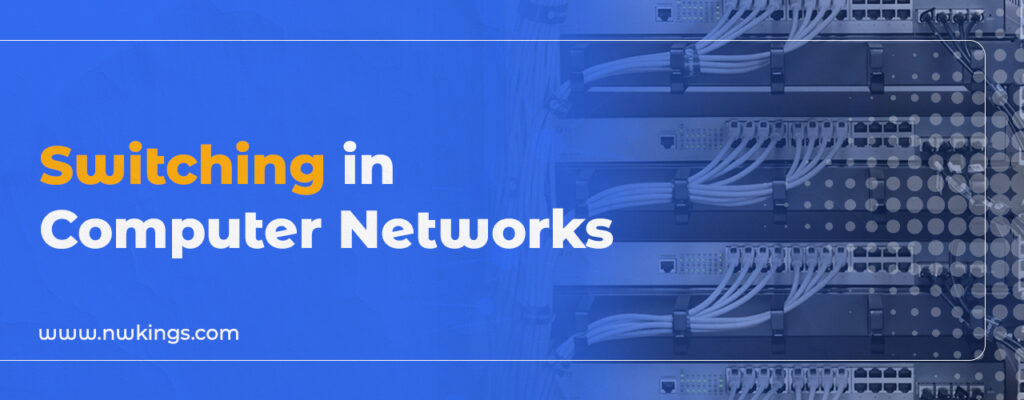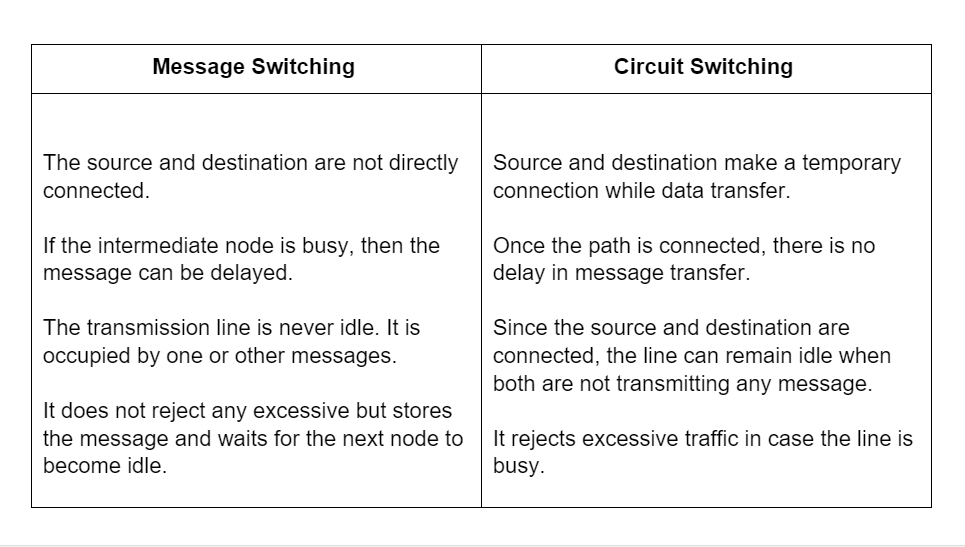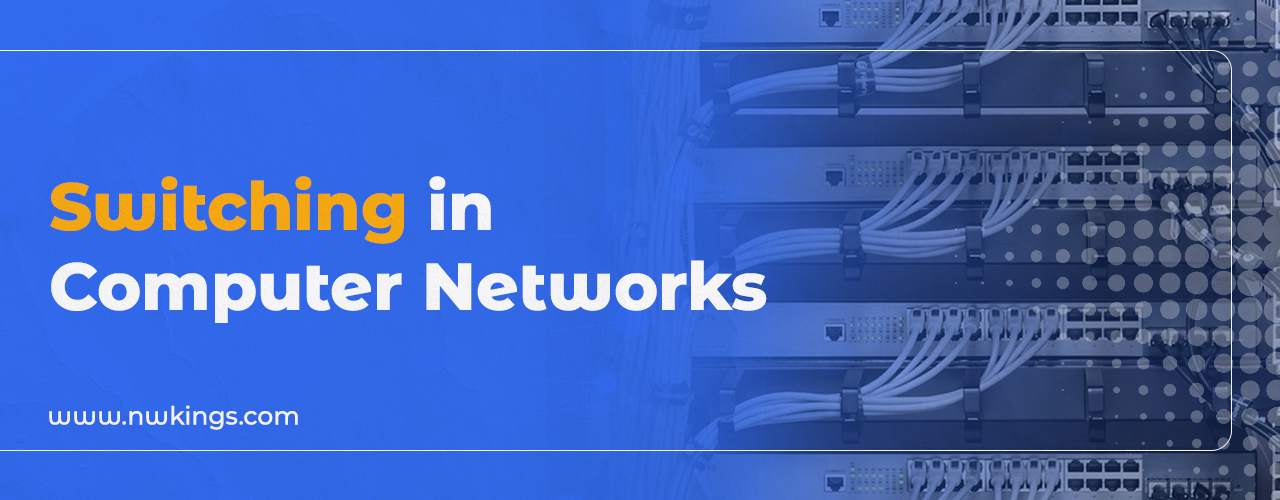
The network is nothing but a set of connected devices, and with time, these devices continue to increase. By connecting multiple devices, we have the problem of how to make two devices communicate with each other without affecting other devices, i.e., how to make one-to-one communication possible.
Yes! We can create a point-point connection by using Mesh topology or Star topology, but in the case of a large network, there would be a lot of waste of resources. A large network would require a lot of links and infrastructure, and hence the cost increases. Also, most of the time the link would remain idle (when connected devices are not communicating). Hence creating a Mesh or Star topology in a large network does not look like a good idea.
Switching is the concept that can solve this problem and can make our network cost-efficient.
What are the kinds of switching in computer networks?
The different kinds of switching in computer networks are as follows-
- Circuit Switching
- Message Switching
- Packet Switching
What is Circuit Switching in computer networks?
In Circuit Switching, a physical connection gets established between two devices. It is the type of switching technique originally used by telephone exchanges.
Links connecting different stations use a process called multiplexing.
When the bandwidth of a link connecting devices is more than required, the link gets diverged to transmit multiple signals.
NOTE: Multiplexing is a technique that helps in the transmission of multiple signals using a single link at the same time. Data transferred in this method is not packetized and flows continuously from source to destination.
What are the phases of Circuit Switching in computer networks?
There are three phases in circuit switching, namely-
- Setup Phase: Before two devices communicate, a connection needs to be established. When devices A and B want to communicate, A sends a request that includes the address of B. Consider it as dialing a phone number of a person you want to communicate with. In this phase, devices make the reservation of resources which includes bandwidth, time slots, switch buffers, and processing time.
- Data Transfer Phase: When a connection gets established, two devices can start communicating.
- Teardown Phase: Once communication gets complete, the connection terminates. Hence the link is now free for other devices helping in the proper utilization of resources.
What is Message Switching in computer networks?
Message switching is a communication technique in which data gets transmitted in the form of divided messages and packets. In this case, each message is treated as an individual entity and transmitted individually from one point to another, which means each message/packet may or may not pass through the same path. They can travel with different paths to reach their destination. In the case of message switching, a dedicated connection between sender and receiver is not required.
NOTE: Message switching is also known as the store and forward method.
Each node in a communications channel stores the packet, receives, reads the header, and then forwards. If the next hop node is occupied with a packet of a different device and is unable to receive the existing packet, the previous node stores the packet until the next hop node is unoccupied. Generally, messages get transmitted on a first come first serve basis. If the message has the priority header, it is given priority over another message. Hence each node requires some storage capacity.
What is the difference between Message and Circuit Switching in Computer Networks?
The difference between Message and Circuit Switching in computer Networks is as follows-

What is Packet Switching in computer networks?
Circuit switching was primarily used for voice services and is designed accordingly. It was not compatible with a variety of digital devices. An efficient communication channel should be able to control bandwidth and make proper utilization of it, but in the case of circuit switching, it was not possible.
While Message Switching overcomes this drawback of circuit switching by using idle links and storing and forwarding messages accordingly, it causes a delay in transmission.
Therefore, Packet switching is an improved form of circuit and message switching. It overcomes the limitation of both.
Data originating at the source gets divided into packets. The maximum packet length is 512 bytes. It contains user data and some control information. By diving this data into packets, files can be transmitted fast and efficiently over the network. Once these packets reach their destination, it gets assembled to form complete data.
Each packet can travel using different paths. Packets get equipped with source and destination addresses which helps each packet to reach the destination independently and leads to the reduction of congestion in the network. The Internet is an example of a packet-switched network that relies on Internet Protocol (IP) for routing packets.
What are the types of Packet Switching in computer networks?
The kinds of Packet Switching in computer networks are as follows-
- Datagram: It is also called connectionless packet switching. Each packet gets routed independently. The routing table stored in the router (MAC table in case of the switch) helps to determine the outgoing link to reach the destination. Since a packet gets delivered using a different path, it may reach the destination in a different order, and hence packets are provided with sequence numbers, which helps them assemble at the destination. It is the most commonly used switching technique.
- Virtual Circuit: It is also called connection-oriented packet switching. It combines the feature of both circuit switching and message switching. Before initiating data transmission, it establishes a logical path called a virtual circuit. All the packet follows this same virtual circuit established between the sender and the receiver. To identify the path, the packet contains a virtual circuit identifier bit. This bit is shorter than the source and destination address header used in the datagram technique. After establishing the virtual circuit, data gets transmitted in the form of packets.


